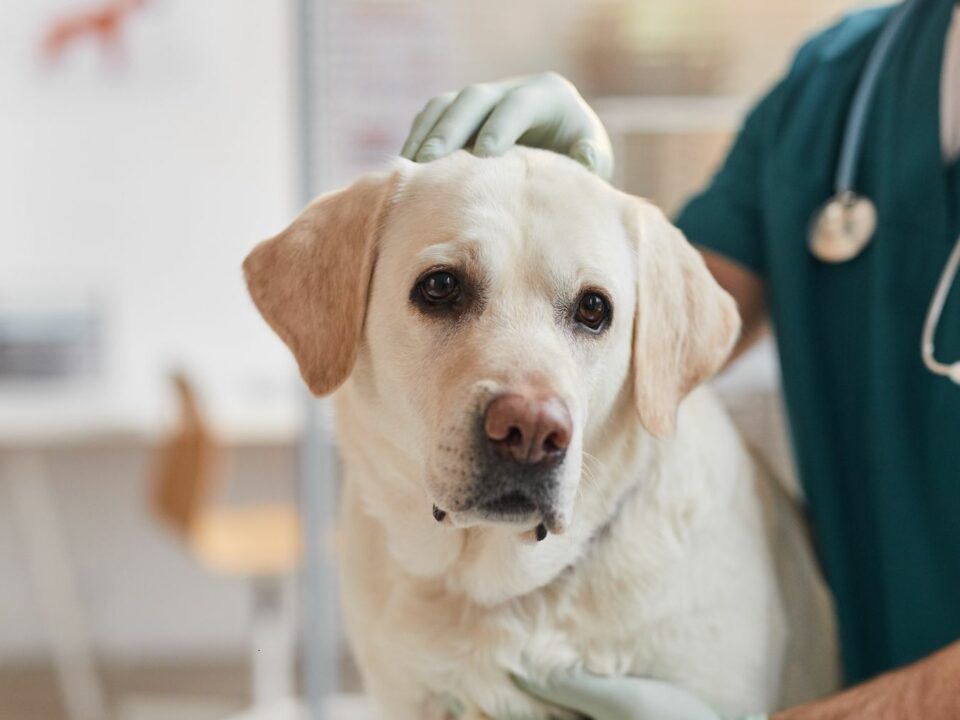
Routine Vet Care vs Emergencies: Key Differences Explained
February 27, 2025
Recognising and Preventing Heatstroke in Dogs and Cats
May 8, 2025How to Choose the Right Pet Insurance

Whether you have a brand-new puppy or a senior cat, pet insurance provides peace of mind that if anything were to happen, you could afford to give them the treatment they deserve.
But finding the right type of cover can be complicated. You need insurance that won’t break your monthly budget. But you also need to ensure you’re not left with huge bills not covered by your policy if your pet does require veterinary care.
Rossmore Vet’s guide to choosing the right policy for your pet has you covered. We look at the three different types of cover and explore the cost factors involved so you know what to look at when comparing products.
What Is Pet Insurance?
Pet insurance works similarly to human health insurance, but it typically reimburses you for eligible vet expenses rather than paying the provider directly. The percentage of vet costs the pet insurer pays depends on the type of pet insurance you have and other factors, including the annual benefit limit.
When you make a claim, you will also have to pay a policy excess. Generally speaking, the higher the excess, the lower your premium. If you need to make a claim, you can usually do this online by filling in a form and providing an itemised vet bill along with consultation notes.
Other Things to Know About Insurance Policies for Your Pet
Pet insurance generally doesn’t cover pre-existing conditions, though some insurers may offer limited coverage depending on the condition and waiting period. You should always check policy exclusions before you purchase illness cover.
It also generally only covers cats and dogs, so if you are seeking a new pet insurance policy for another type of pet, you may need to contact a specialist insurance provider. Pets used for commercial purposes may also need pet insurance cover from a specialist insurer.
Your pet’s breed may also determine whether or not it can be insured as some breeds of dogs are banned in Australia. Dogs that have been classed as dangerous dogs may also be uninsurable.
Some insurers offer multi-pet discounts and others are happy to accept multiple pets on a single policy.
What Are the Different Types of Pet Insurance?
Different pet insurance policies cover a pet’s medical expenses in different situations.
Accident-only cover. Accident-only is the least expensive type of pet insurance, but it does not cover illnesses or routine preventative care. It may cover injuries like car accidents, poisoning, wounds and snake bites. However, these basic pet insurance policies have a lower benefit percentage and annual limit.
Accident and illness coverage. As well as covering accidental injuries, an accident and illness pet insurance plan has additional coverage if your pet gets sick. However, most pet insurance policies of this type won’t cover pre-existing medical conditions. Some cat and dog insurance policies also allow for optional extras to be added. Some policies offer optional extras that cover routine care treatments like vaccinations and dental cleanings.

Comprehensive accident and illness cover. In addition to covering accidental injuries and illness, comprehensive policies offer preventative care measures and sometimes even alternative therapies. As this is the highest level of coverage you can purchase, it has the highest premiums of all types of pet insurance. However, they also cover a higher percentage of eligible vet bills.
Key Factors to Consider When Choosing a Pet Insurance Plan
When trying to find the best pet insurance for your furry friend, there are many other factors to consider aside from the coverage options. These range from how your insurer covers costs to your pet’s health risks and age.
Pet insurance cost factors
Several factors influence the cost of pet insurance, including pet age and breed, your benefit limit, the benefit percentage, the claim excess and optional extras. However, the annual premium cost isn’t the only thing you should be looking at.
Pet insurance policies have an annual benefit limit. This is the maximum the insurer will pay back to you during your insurance period. This annual limit is often subject to conditions and exclusions.
Pet insurance policies also include a benefit percentage. This is the amount of the vet bill that the insurance company will cover. These can range from 50% to 90%.
You should carefully compare pet insurance providers and policies by reading the product disclosure statement to ensure you are getting value for money.
Exclusions
Each pet insurance plan will have different requirements around age limits. Most allow coverage from 8 weeks old however, the cut-off limit for new insurance policies is often around 9 years of age. In addition, policies have varied benefit limits depending on your level of coverage, the age of your pet, their breed and pre-existing conditions.
You should also look carefully into sub-limits that reduce the amount you can claim for particular types of treatments within the policy period.
Waiting Periods
Most policies will enforce a waiting period between when you sign up and when you can claim treatment costs. These waiting periods will be outlined in the product disclosure statement.
Veterinary care
While some insurance companies allow pet owners to choose a vet, others may nominate a particular vet for you to use. This may mean having to travel further if your pet is accidentally injured, so you should always consider this when choosing the best insurance plan for you.
How to Compare Pet Insurance Policies to Find the Best Cover
Just like with other types of insurance, what’s covered and by how much varies across insurers and policies. Here are some steps to follow to help you decide on the best pet insurance for you.

- Decide on the type of cover you require
- Compare the inclusions and exclusions as well as optional extras for things like dental care
- Compare the reimbursement percentage per claim, the maximum amounts that you can claim, sub-limits and the annual excess
- Compare premiums and weigh these against reimbursements and limits for each policy
- Read pet insurance reviews to research if other pet owners have had any trouble making claims
- Get quotes from multiple insurers to ensure you get extensive coverage at the right price
Common Mistakes Australian Pet Owners Make with Insurance
Trying to save money by choosing a plan with the cheapest premium can lead to denied claims and additional costs. Here’s what to avoid when looking for pet insurance:
- Not paying attention to exclusions and being left with high bills for pre-existing conditions, specialised therapies or medications.
- Not getting insurance early enough in a pet’s life and having pre-existing conditions not covered or not being able to insure your pet at all.
- Choosing policies with long waiting periods.
- Failing to check vet compatibility with their insurer.
- Overpaying for unnecessary coverage.
- Being left in financial distress by a complicated claims process.
- Choosing a policy with an inadequate benefit limit.
- Not using their policy to cover routine care procedures and then facing more complicated medical conditions.
- Forgetting to shop around at renewal time.
- Not updating the policy as the pet gets older.
Safeguard Your Finances by Protecting Your Pet
At Rossmore Veterinary Hospital we understand that all owners want the best for their pets. Having insurance means we can provide the best possible care for your pet without putting financial stress on you, the owner.
If you’re considering an insurance policy for your pet, give our Sydney vet surgery a call on (02) 9119 1312 or mention it at your pet’s next check-up. We can offer further advice on your pet’s unique health requirements to ensure you get the best possible protection for your best mate.
Frequently Asked Questions
Which level of pet insurance is the best?
A comprehensive policy gives the best financial protection as it covers a range of accidents, illnesses and preventative treatments and offers the best level of reimbursement. However, monthly or annual premiums will be higher than other levels of insurance.
What is the most cost-effective pet insurance?
Accident-only is the least expensive type of insurance. However, it doesn’t offer coverage for illnesses or preventative treatments.
Do I need pet insurance?
Pet insurance provides peace of mind, particularly if you have a breed that’s prone to health issues or you know that you can’t afford large, unexpected vet bills.



